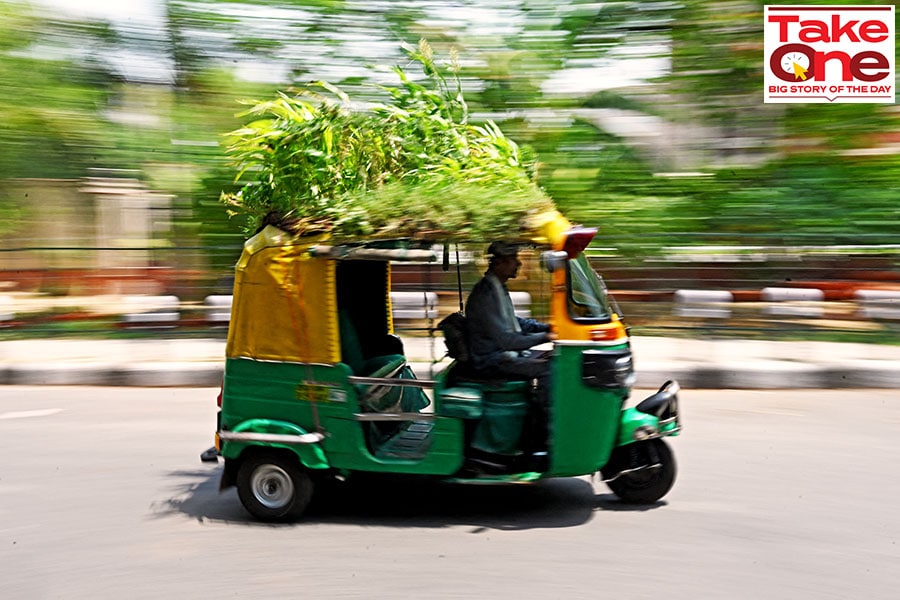
International Day of Biological Diversity 2022: Not all urban greenery is created equal
The need to accommodate local biodiversity is pressing. Indigenous trees not only need much less care and can thrive without pesticides, but they also attract local fauna making up an ecosystem that supports varied species
 Autorickshaw driver Mahender Kumar drives his vehicle with a 'garden' on its roof, in New Delhi on May 2, 2022. Yellow and green autorickshaws are ubiquitous on New Delhi's roads but Mahendra Kumar's vehicle stands out—it has a garden on its roof aimed at keeping passengers cool during the searing summer season. Image: Money Sharma/ AFP
Autorickshaw driver Mahender Kumar drives his vehicle with a 'garden' on its roof, in New Delhi on May 2, 2022. Yellow and green autorickshaws are ubiquitous on New Delhi's roads but Mahendra Kumar's vehicle stands out—it has a garden on its roof aimed at keeping passengers cool during the searing summer season. Image: Money Sharma/ AFP
Outside my Mumbai window, a pair of sunbirds flashes in and out of the red-flowering Sita-Ashoka tree I had planted to replace a fallen gulmohar a decade ago. The gulmohar was one of eight exotic trees we lost on our tiny patch of roadside, and I mourned its spectacular beauty when it fell.
Green cover is recognised as essential to human health and well-being; urban greening is an important mitigation measure to slow climate change. But the right type of vegetation is crucial. Though all trees are beautiful, there is a special beauty to those local species which belong.
Palas trees ‘flame of the forest’ in the jungles of Central India are no less beautiful than a chinar tree in Himalayan Kashmir; wild ginger in the Western Ghats is as beautiful as wild roses in Himachal Pradesh or orchids in Sikkim. Each is suited perfectly to its own natural ecosystem and flourishes without human intervention.
Ordinary people in Mumbai have demonstrated their love of the natural in their years’-long struggle to save the forests of Aarey. Campaign leaders of the Save Aarey Movement include women and young people and even Maharashtra’s young Environment Minister Aaditya Thackeray, a passionate environment lover himself.
Ashok Kothari, former president of the National Society of the Friends of the Trees, who gave me the Sita-Ashoka sapling, said, “Replanting a lost tree is good. All trees absorb carbon and most foster birds and animals and increase urban biodiversity. But, unlike the exotics like gulmohar, indigenous trees like the Sita-Ashoka will flourish here for hundreds of years.”








